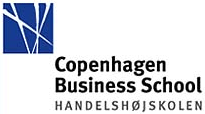No 3-2001: Time and Path Dependencies in Foreign Acquisition Behaviours The History of Danish Takeovers Abroad 1888 to 1993
Jens Gammelgaard
Additional contact information
Jens Gammelgaard: Department of International Economics and Management, Copenhagen Business School, Postal: Department of International Economics and Management, Copenhagen Business School, Howitzvej 60, 2nd floor , DK-2200 Copenhagen N, Denmark
Abstract: Is the present investment behaviour of firms acquiring other firms abroad an outcome of an historic tradition and the time period in which the take-over started? As Barney (1986a) points out is the strategies of the firm and abilities to fulfil those strategies the result of a historic developing, beginning with the foundation of the firm and the unique personalities of its founder(s), and the specific circumstances of its subsequent growth. Therefore, some path dependencies are predictable, where firms continuously follow a specific track in their foreign direct investment behaviour. Organisational investment routines occur and alternative entry modes are not reconsidered (Nelson & Winter, 1982; Duhaime & Schwenk, 1985), especially if the first foreign acquisition turns out to be successful, this investment mode evolves to be the dominant logic in the firm’s internationalisation process (Prahalad & Bettis, 1986; Côte, Langley & Pasquero, 1999). However, one aspect is acquisitions versus other entry modes, another is the underlying strategies and motives behind the investment mode. The purpose of this paper is to illustrate time and path dependent acquisition motives in the case of Danish industrial firms acquiring foreign firms in the period 1888 to 1993. To give one introductory example, Rentokil, an English subsidiary to Sophus Berendsen acquired more than 100 foreign firms in an attempt to reach a 20% annual increase in turnover. This firm started its international commitment through acquisitions in a period where the growth of the firm was the dominating strategy, and subsequently Rentokil stayed within this track. Other firms are able to break this time-related path dependency and follow the prevailing motive of the next time period. Therefore, another assumption discussed is that different acquisition motives link up to different time periods. To give an example, international acquisitions at the beginning of the 20 th century were often an outcome of an attempt to avoid tariffs. Today many firms follow a competence-oriented strategy.
Keywords: Danish Business History; International Acquisitions; Mergers and Acquisitions Motives; Path Dependencies; Denmark
31 pages, June 10, 2001
Full text files
6550
- Copenhagen Business School, Department of International Economics and Management
- Ordering Working Papers
- Home page for this series
Questions (including download problems) about the papers in this series should be directed to Lars Nondal ()
Report other problems with accessing this service to Sune Karlsson ().
RePEc:hhb:cbsint:2001-003This page generated on 2024-09-13 22:18:14.

